Retiring Israeli general calls for urgent army overhaul PHOTO
The Times of Israel has published an article, where Eran Ortal, commander of the General Staff’s Dado Center, argues that Israel’s military must transform to meet threats by Hezbollah and Hamas, and points at way ahead. Caliber.Az reprints the article.
Speaking at Independence Day celebrations last year, then-prime minister Naftali Bennett painted a rosy picture, arguing that Israel “is stronger than ever.”
“The IDF, the Shin Bet, the Mossad are getting stronger at an unprecedented rate,” he boasted.
At first blush, it seems like a fairly obvious conclusion. Israel’s economy continues to expand, its alliances are expanding in the Arab world and in Africa, and its population is growing at a healthy clip.
Israel’s Judiciary: Reform or Ruin?Keep Watching
On the military front, too, things ostensibly look better than ever. Israel faces no peer threats on its borders and no prospect of invasion, its defensive technologies like Iron Dome are the object of international envy, and it regularly produces technological innovations.
But a core of senior officers within the IDF view the situation in a drastically different fashion. They recognize that Israel’s adversaries have been growing stronger for decades, and existing IDF capabilities and doctrine are increasingly ill-suited to respond effectively to the threat. Recently retired chief of staff Aviv Kohavi recognized the need for transformation and initiated the process within the IDF to carry it out.
But there is still a long way to go, argues one of the leading intellectual fathers of the IDF’s transformation.

“Our military situation is eroding, not improving,” said Brig. Gen. Eran Ortal, outgoing commander of the IDF’s Dado Center for Interdisciplinary Military Studies, a part of the General Staff’s Operations Directorate.
The battle before the war
The evidence for Ortal’s assertion emerges once one steps back and surveys the course of Israel’s military history. The IDF is now decades from its acclaimed conventional victories; its last clear win on the battlefield took place more than 20 years ago.
In the meantime, Israel’s adversaries have continued to improve their considerable capabilities and increase the threat they pose to civilians and military forces. In response, the IDF seems oddly insistent on carrying out a particular type of operation repeatedly, one that leaves the public with a persistent feeling that it is only a matter of time before it’s back in bomb shelters once again, Ortal says.
Ortal has been sounding the alarm within the military for years. After more than two decades in the IDF’s General Staff, he is retiring at the end of the month.
But before stepping down, Ortal released a book that is unprecedented in the IDF, and exceedingly rare in military organizations.
“The Battle before the War: The Inside Story of the IDF’s Transformation” is not another work by a retiring general recounting the high-octane military exploits that he led. Nor is it the score-settling of a disgruntled mid-level officer whose path to promotion was blocked.
It instead comes from the pen of a general deeply embedded within the IDF’s top echelon arguing starkly that the military must change dramatically if it is to fulfill its role in protecting the country.
In his foreword to the book, Kohavi called Ortal “one of the most prominent voices in identifying and pointing at the gaps between Israel’s strategic challenges and the necessary operational response.”
Over the past decade, explained Kohavi, Ortal’s ideas about transformation “moved from the sidelines of the conceptual debate to the center of consensus.”
During his four years at the head of the Dado Center, which develops the methods for organizational learning in the IDF at its senior echelons, Ortal spread his ideas about the need for fundamental change through courses, articles, and The Dado Center Journal.
Before he moves on, Ortal wants to make sure policymakers and commanders recognize the urgency of the situation, and carry out the transformation process that began under Kohavi.
“Time is not on our side,” he said.
A plan for victory
In 2019, upon assuming command of the IDF, Kohavi brought the top brass together for a “Victory Workshop” to lay the groundwork for the army’s next multi-year plan. Ortal and his Dado Center team (the author of this article was a researcher at the center during this period but did not participate in the workshop) played a leading role in structuring the year-long self-examination process that resulted in a plan called Momentum.
The IDF’s top brass came out of the self-examination workshop with some worrying conclusions.
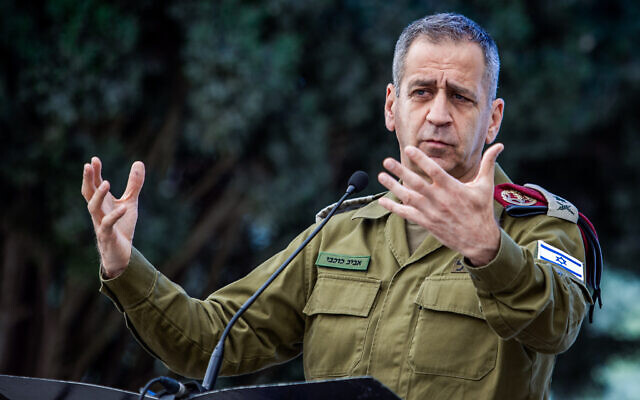
“We said to ourselves, the reality of complete military superiority that we enjoyed for many years is changing and eroding,” Ortal told The Times of Israel from his office at Camp Moshe Dayan in Glilot, just north of Tel Aviv.
“Even though we are investing massively in force design, our enemies are closing the gap,” he explained.
The widespread availability of commercial technology that was once the domain of well-funded militaries is at the core of the problem, in Ortal’s telling.
“Technology has reached everyone,” he said. “We no longer have the exclusive ability to attack targets with precision.”
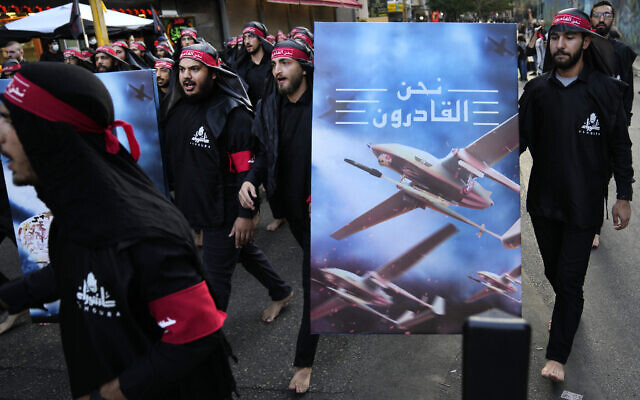
Hamas and Hezbollah, once seen as poorly resourced terrorist groups that could carry out occasional bombings and small hit-and-run attacks, now possess capabilities associated with state militaries. They operate drones, carry out cyberattacks and conduct electronic warfare.
Increasingly, their large but unsophisticated rocket arsenals include precision missiles that can target key Israeli infrastructure like power stations, government offices, and bridges, not to mention IDF bases and runways.
The three pillars
Kohavi’s “Victory” process looked back to the earliest days of the state to pinpoint what had gone wrong.
In Israel’s first decades, its leadership formulated a national security concept well crafted for the reality the fledging Jewish state faced.
A hostile Arab world enjoyed numerous advantages, including an overwhelming numerical edge. Moreover, Israel could only lose militarily, and never win. One defeat would mean the end of the Zionist experiment, while there was no conceivable way to permanently knock out its enemies on the battlefield, no “Berlin” to conquer to force unconditional surrender.
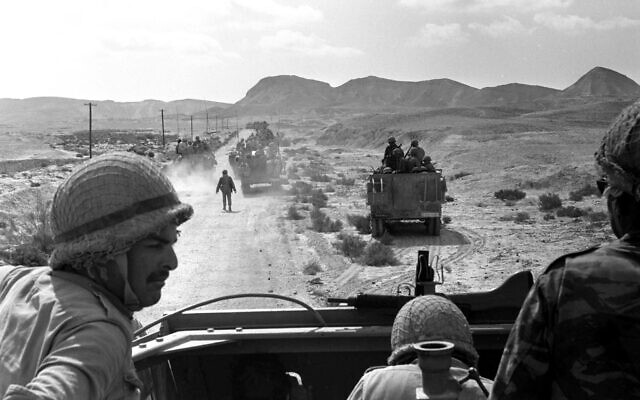
In this reality, former prime minister David Ben-Gurion developed a concept based on three pillars — deterrence, early warning and decisive battlefield victory.
Israel sought to deter its enemies as much as possible to increase the time between conflicts and allow the state to absorb immigrants and build a modern economy.
If deterrence failed, Israel’s well-resourced intelligence bodies would provide indications well ahead of time that a war was coming. This gave Israel time to call up its hammer, the reserve armored columns that made up the bulk of its maneuver force. It could also use its highly capable air force to carry out a preemptive strike and gain air supremacy on the first day of a war.
Once the war began, the ground forces were meant to quickly take the fight into enemy territory and away from Israel’s densely packed critical infrastructure and population centers. Tanks would then drive hard in order to win quickly, to allow reservists to return home and restart the economy, and decisively, to restore deterrence and create as long a period of peace as possible.
In order to carry out this vision, the IDF created a highly mobile ground force led by intelligent officers empowered to take the initiative without waiting for orders from above, and a world-class air force to quickly gain control of the skies and then support the advancing armored columns.

This formula served the country exceedingly well for a time. In the 1956 Sinai campaign, the 1967 Six Day War, and even after the disastrous first week in the 1973 Yom Kippur War, Israeli forces sliced through ponderous Arab divisions and gained unequivocal battlefield victories.
Even more significantly, the IDF’s successes in the Sinai and on the Golan Heights convinced its Arab foes that they had no choice but to abandon their aim of destroying Israel in war. The seven countries that invaded Israel in 1948 were only five by 1967, and in the Yom Kippur War six years later, Jordan did everything it could to effectively stay out of the fight, leaving Egypt, Syria, and an Iraqi expeditionary force to face the IDF.
By the decade’s end, Egypt signed a peace agreement and dropped out of the fight. In 1994, Jordan followed suit.
Maneuver fears
As Israel was signing peace agreements with its neighbors, it was also moving toward a drastically different military concept.

Shaken by the casualties sustained by ground forces in 1973, and enticed by the promise of the US military’s Revolution in Military Affairs theory with its innovations against the Soviet threat, the IDF began shifting resources and capabilities away from its traditional approach. Capturing land was seen as too casualty-intensive and opened IDF forces up to being bled slowly by guerrilla fighters.
Instead of ground forces rapidly conquering enemy territory to force them into ceasefires and peace agreements, Israeli planners built a force centered on intelligence and precision strikes, primarily from the air. The IAF’s brilliant destruction of the Syrian anti-aircraft array in the 1982 First Lebanon War and the performance of US airpower in the 1991 First Gulf War confirmed the wisdom of the approach.
Ground maneuver, formerly the cornerstone of IDF war plans, disappeared from major Israeli conflicts. The two large-scale operations against Hezbollah in southern Lebanon in the 1990s — Accountability and Grapes of Wrath — featured only artillery and aerial attacks and absolutely no ground maneuver.
The belief in the IDF and in Western militaries was that overwhelming technological superiority would enable them to shut down the enemy military system by striking at key nodes, while incurring minimal losses.
Out of the Israeli version of Revolution in Military Affairs grew a pattern of deterrence operations, marked by an opening air attack, days or weeks of air and artillery strikes, then a ceasefire accompanied by assurances from Israeli leaders that deterrence was restored.
Shaken by the casualties sustained by ground forces in 1973, and enticed by the promise of the US military’s Revolution in Military Affairs theory with its innovations against the Soviet threat, the IDF began shifting resources and capabilities away from its traditional approach. Capturing land was seen as too casualty-intensive and opened IDF forces up to being bled slowly by guerrilla fighters.
Instead of ground forces rapidly conquering enemy territory to force them into ceasefires and peace agreements, Israeli planners built a force centered on intelligence and precision strikes, primarily from the air. The IAF’s brilliant destruction of the Syrian anti-aircraft array in the 1982 First Lebanon War and the performance of US airpower in the 1991 First Gulf War confirmed the wisdom of the approach.
Ground maneuver, formerly the cornerstone of IDF war plans, disappeared from major Israeli conflicts. The two large-scale operations against Hezbollah in southern Lebanon in the 1990s — Accountability and Grapes of Wrath — featured only artillery and aerial attacks and absolutely no ground maneuver.
The belief in the IDF and in Western militaries was that overwhelming technological superiority would enable them to shut down the enemy military system by striking at key nodes, while incurring minimal losses.
Out of the Israeli version of Revolution in Military Affairs grew a pattern of deterrence operations, marked by an opening air attack, days or weeks of air and artillery strikes, then a ceasefire accompanied by assurances from Israeli leaders that deterrence was restored.
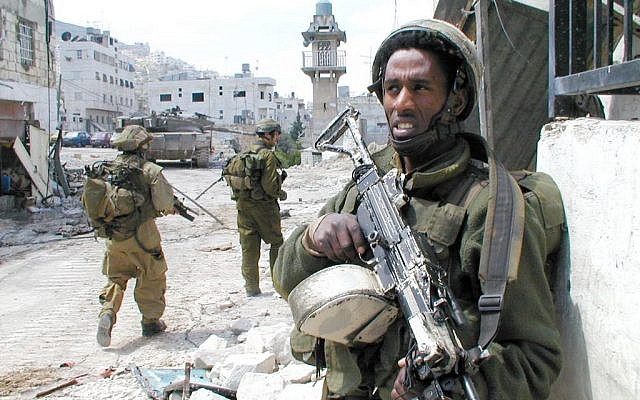
There were exceptions to this trend. Operation Defensive Shield at the height of the Second Intifada in 2002 saw Israeli forces recapture Palestinian cities — a military success in the fight against Palestinian terror that served to reinforce the idea that Israel’s ground forces were capable of handling threats beyond the border.
Dead end
That illusion collapsed in 2006 during the Second Lebanon War. The operation began as previous deterrence operations had, with massive airstrikes. But as it became clear that the air force couldn’t stop Hezbollah rocket fire into Israel, ground forces were introduced gradually and haltingly.
“The thing that was seared into my memory was the difficulty the decision-makers exhibited in launching a ground maneuver,” remembered Gen. Guy Tzur, then commander of Division 162.
The piecemeal employment and subpar performance was a wake-up call that something was deeply wrong in the IDF, what the post-war Winograd Commission termed “a lack of control, lack of taking advantage of opportunities, lack of planning, and lack of determination.”
The fix was to “go back to basics” and reinforce traditional ideas about IDF ground maneuver. While reinvesting in ground forces, the deterrence approach stubbornly persisted. Israel fought four major operations in Gaza designed to bolster deterrence, with ground forces introduced in a limited fashion or as a last resort.
“It seems that we are destined to launch more and more ‘sour’ operations, frustrating periods of waiting, delayed decisions to engage in an overly limited ground attack and the further strengthening of the military threats against Israel,” wrote Tzur, who collaborated closely with Ortal on the Land Ahead ground forces transformation process.
In the meantime, Hamas and Hezbollah and their patrons in Tehran are convinced that their approach — a rocket threat on Israel’s civilians combined with anti-tank capabilities to keep the IDF from capturing launch sites — is a successful one, and they are doubling down on it. Their ability to threaten Israel grows, and they don’t seem especially deterred. The introduction of the Iron Dome anti-rocket system, despite its tactical success, has done nothing to convince Israel’s adversaries otherwise.
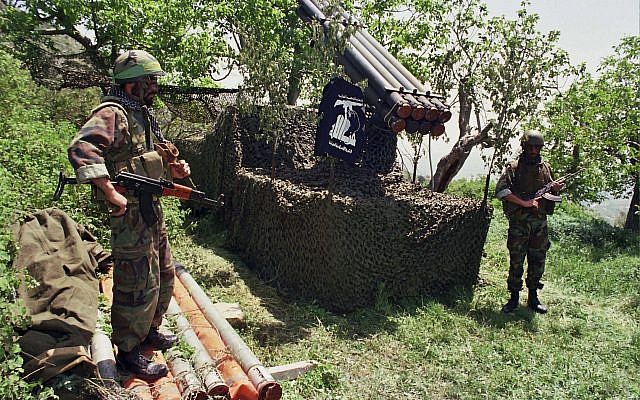
Ortal and Tamir Yadai, then a general in charge of the IDF Doctrine and Training Division, were the first to publicly identify this worrying trend from the military in a 2013 article that argued deterrence operations had reached a “dead end.”
“Deterrence operations have not only exhausted themselves, but in hindsight, they have accelerated the scope and strength of threats against Israel,” they wrote.
Enlisting like-minded generals, Ortal began orienting the IDF toward recognizing the need for fundamental change. The climax of that process was the 2019 Victory Workshop led by Kohavi, who shared Ortal’s discomfort.
“I think the critical, important achievement of this chief of staff was introducing the need for the mindset of change,” Ortal explained.
A new approach
The workshop produced the Operational Concept for Victory, which identified Hamas and Hezbollah not as asymmetrical armed groups, but as full-fledged “rocket-based terror armies.” These adversaries pose a threat to Israeli civilians with their rocket arsenals, conceal their forces in urban areas, and if IDF forces do move to fight them in their own territory, they have developed a range of defensive tactics to hamper Israel’s advance while bleeding its soldiers.
These elements, wrote Kohavi in 2020, are meant to convince Israel that “it cannot win on the battlefield, and it will be too expensive and painful to attack its enemies and deter them from continuing to build a threat on our borders.”

These resilient forces on Israel’s borders in turn provide far-away Iran a deterrent shield to make Israel think long and hard before striking its nuclear program.
The Victory concept, and the Momentum plan supporting it, was meant to give the IDF the tools to defeat these terror armies on the battlefield, as it did against state adversaries decades ago.
The first thing that needs to happen, said Ortal, was to make ground maneuver relevant again. “The reason we don’t use the ground forces’ full power is really simple — we don’t know how to tie the maneuver force with the strategic problem well enough. And that problem is that they are firing on our home front.”
To stop rocket launches into Israel, the IDF will need to move into enemy territory and capture the launch sites. It will be facing forces that hide in buildings and tunnels, emerge for a few seconds to fire, then disappear.
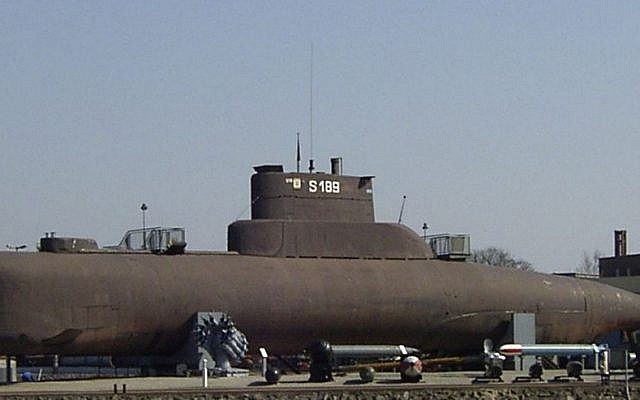
In his book, Ortal looks to the World War II Battle of the Atlantic against German U-boats for the solution. Facing submarines that surfaced, fired their torpedoes, then disappeared from the battlefield before they could be targeted, Allied navies eventually deployed radar, sonar, and escort aircraft carriers into the heart of the sea lanes. Eventually, they turned the tide, turning the U-boats from the hunters into the hunted.
Ortal called for flooding the battlefield with sensors — as the Allies did with radar and sonar — linked to IDF ground forces to enable them to find Hamas and Hezbollah crews first and destroy them within seconds. He also wants to see infantry officers at the tactical levels operating their own extensive UAV fleet, helping them locate the enemy much as the aircraft carriers did in the Atlantic.
“A relatively safe action for them on the battlefield will turn into a very dangerous one,” Ortal said of the terror groups.
Broadly, he stressed that though its enemies make use of new technologies, Israel’s potential to take advantage of civilian innovations — big data, artificial intelligence, and machine learning — and implement them on the battlefield is far greater.
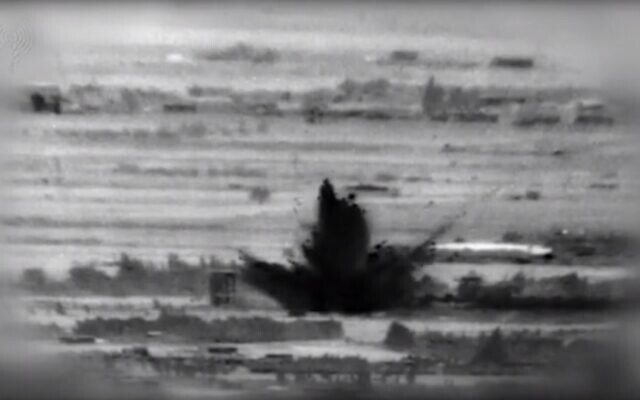
“We have to stretch the ‘Smart’ factory of the IDF from the Kirya in Tel Aviv into the heart of the battlefield,” he urged, “and turn the lights on all those rocket and antitank teams.”
The current Mabam — or campaign between wars — approach, in which the IAF destroys weapons shipments and forces in Lebanon and Syria, is helpful but is no substitute for victory in war, he argued.
“Mabam could have an effect of strategic blinding on the IDF’s real mission precisely because of its success,” said Ortal. “But we must recognize that it is only a delaying action, not a solution.”
“The whole logic of Mabam is to create a better starting point for when the next war comes. And it will come,” he said.
Of course, Israel also has to deal with the head of the “octopus” in Tehran, and not just its tentacles, to use former premier Bennett’s awkward metaphor.
While the air force is the IDF’s long arm tasked with preparing to strike Iran’s nuclear program, a potential raid is not sufficient, said Ortal. Israel needs forces that can threaten Iran on its doorstep, as Tehran has done to Israel.
“You have to create a presence, even if it’s not continuous,” Ortal said. “Israel will never have aircraft carriers, but it will have to be a naval presence that is less overt. It might not always port at home. It might not always have an Israeli flag.”
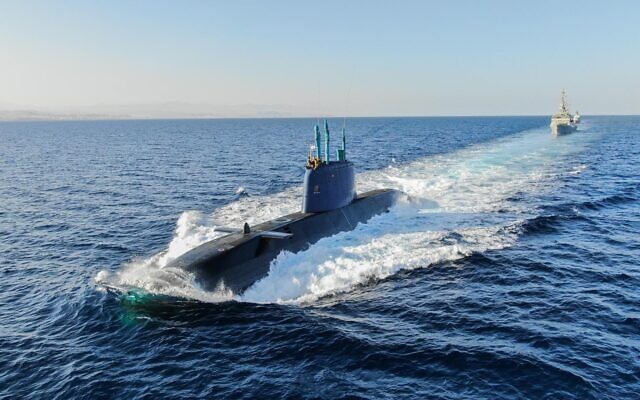
The Abraham Accords with the UAE and Bahrain, both situated across the Persian Gulf from Iran, is a game-changer in this regard, he said. “Everyone has the same problems. Everyone can benefit from early warning.”
At last year’s inaugural Negev Summit, then-foreign minister Yair Lapid said the assembled countries focused on creating a “regional security architecture.”
“This new architecture, the shared capabilities we are building, intimidates and deters our common enemies – first and foremost Iran and its proxies,” he said. “They certainly have something to fear.”
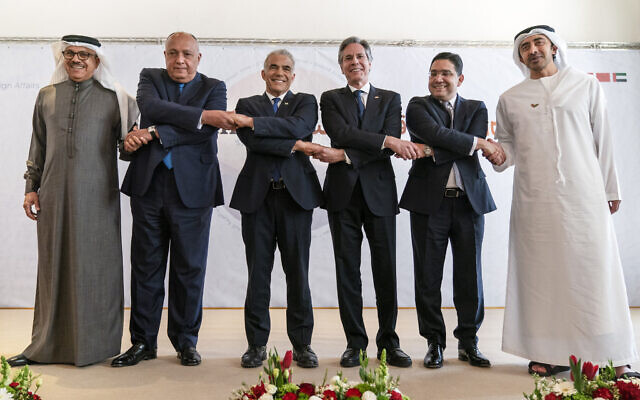
Eventually, Ortal envisions Iran’s investment in proxies across the Middle East will prove an unsustainable overstretch, similar to what led to the fall of the Soviet Union.
As he steps away from the IDF, Ortal hopes that his book will guide the next generation of officers to identify the challenge in a more timely fashion.
“History doesn’t stop,” he declared. “By the time we build capabilities from our vision against terror armies, we will be facing a new challenge because the enemy adapts.”
“The 2019 process came a decade too late,” Ortal continued. “The next 2019 will hopefully come more quickly.








